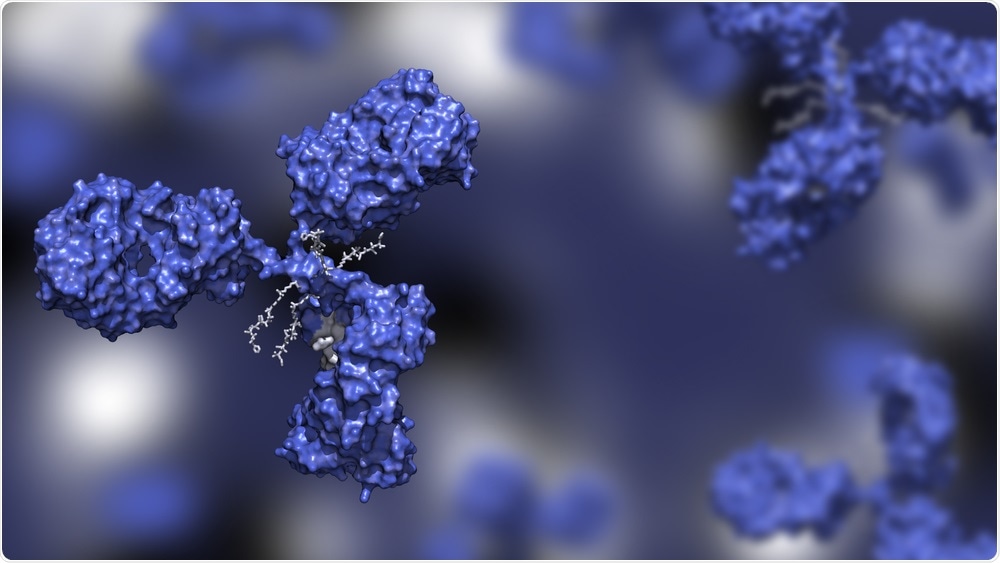Reviewed by Danielle Ellis, B.Sc.Feb 14 2022
Antibody-drug conjugates (ADCs), an intricate that covalently links a potent cytotoxin to an antibody, have piqued the interest of researchers as a new bio-therapeutic methodology. When compared to random conjugation, site-specific conjugation of potent payloads can enhance the therapeutic index of ADCs.

Image Credit: Huen Structure Bio/Shutterstock.com
Glycosite-specific ADCs (gsADCs), which use the Asn297 N-glycan of IgG Fc as the conjugation site for drug payloads, typically necessitate multiple steps for IgG glycol-engineering with two or even more enzymes, restricting substrate expansion and intensifying the preparation.
To address these issues, a team of researchers led by Wei Huang from the Chinese Academy of Sciences’ Shanghai Institute of Materia Medica developed a simple and super effective technique for synthesizing gsADCs in one step using a disaccharide-drug substrate. The findings were published recently in the journal Acta Pharmaceutica Sinica B.
The scientists began by screening a variety of glycan substrates and ENGases for one-step IgG glycol engineering. They discovered that N-acetyl-lactosamine (LacNAc) could be transmitted onto the N-glycosylation site of native Trastuzumab in a single step without hydrolysis, and that derived LacNAc substrates with different functional groups and small molecules also had high transglycosylation interaction.
The glycol-engineered Trastuzumabs with bioorthogonal groups were then used to determine Fc receptor binding, fluorescence labeling, and glycan-elongation via click chemistry.
Encouraged by the sturdy LacNAc-based IgG glycol-engineering, the researchers used this method to synthesize glycosite-specific ADCs in one or two steps. First, the LacNAc-based Trastuzumab with an azido tag can easily react with a cyclooctyne-tagged payload to produce a gsADC in two steps using click chemistry.
More relevantly, the researchers created an MMAE-LacNAc substrate and discovered that the complex could be recognized by Endo-S2 and relocated onto the glycosylation site in one hour, yielding the pertaining gsADC in a single step. The resulting gsADCs with shortened glycan LacNAc demonstrated great uniformity, consistency, and anti-tumor action.
This paper presents a new approach for highly efficient gsADC synthesis by reprogramming multi-step IgG glycol-engineering to a one-step process using LacNAc-based substrates. Other antibody forms, such as bispecific antibodies and nanobodies with Fc domains, are also consistent with the approach.
Source:
Journal reference:
Shi, W., et al. (2021) One-step synthesis of site-specific antibody–drug conjugates by reprograming IgG glycoengineering with LacNAc-based substrates. Acta Pharmaceutica Sinica B. doi.org/10.1016/j.apsb.2021.12.013.